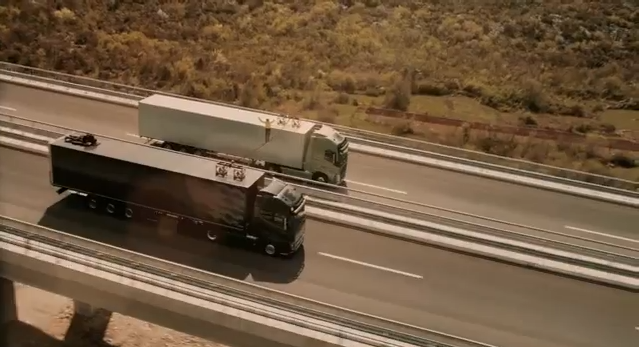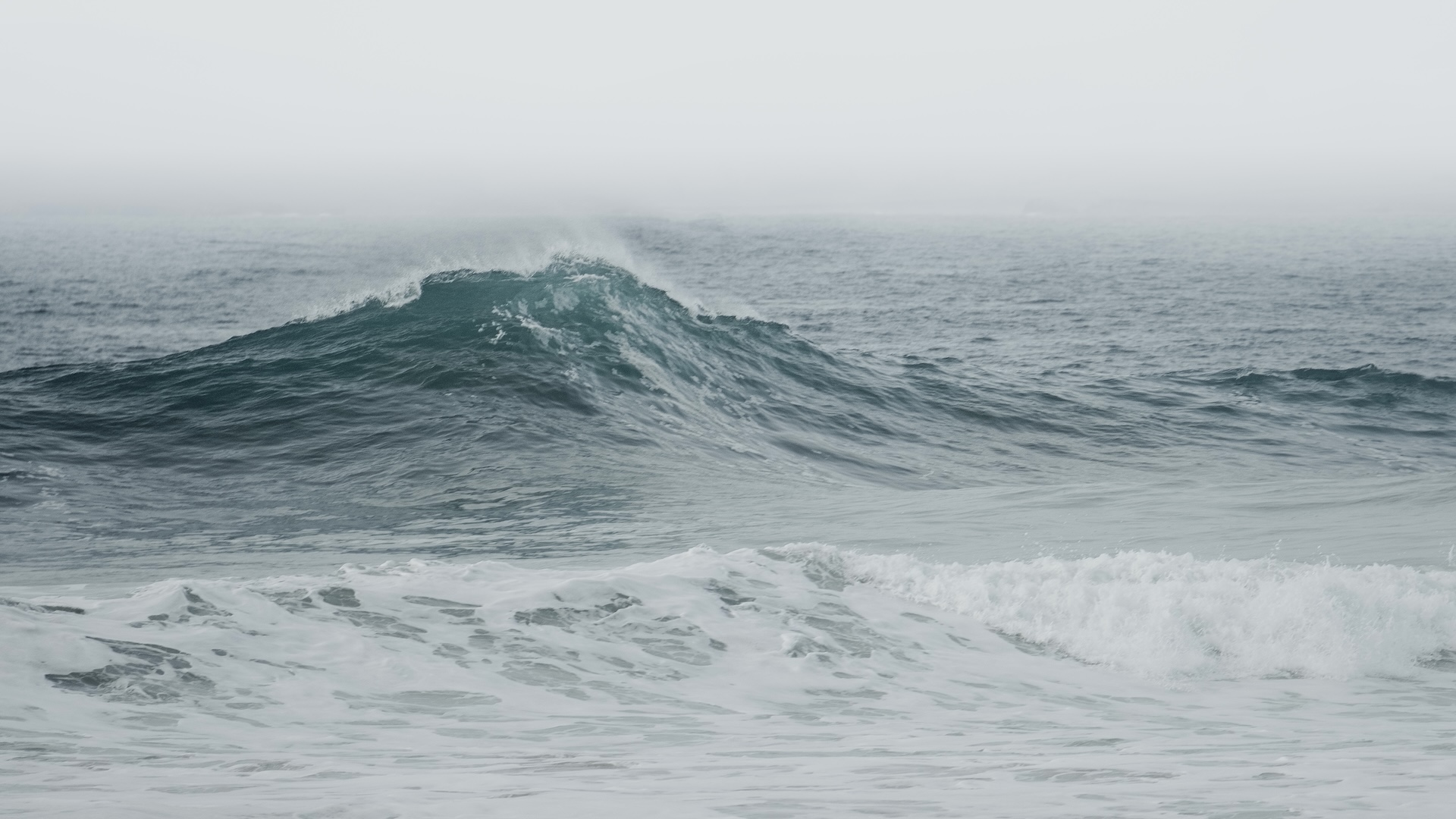The Physics of Stuntwoman's Crazy Slackline Walk between Trucks

In a video that has racked up 2 million views on YouTube in the past five days, world record-holding slackliner Faith Dickey walks across a rope strung between two semi-trucks as the vehicles barrel down a highway side-by-side at 80 miles per hour. Dickey makes it across the rope a split second before the trucks enter separate tunnels, snapping the rope on the brick divide between them.
Volvo sponsored the stunt, which occurred on an unopened highway in Croatia, to demonstrate the smooth handling of its new Volvo FH semi-truck model. Dickey, 23, holds world records for both the longest and highest female slackline walks (in which a bendy nylon rope is used instead of a stiff tightrope), but she says the Volvo stunt was her most difficult feat yet.
How did she pull it off? According to Louis Bloomfield, a physicist at the University of Virginia, the stunt took skill and daring on Dickey's part, and the anonymous truck drivers deserve a big nod, too. [Video]
The major challenge for Dickey was taking in stride the huge amount of air resistance one experiences when hurtling along the highway at 80 mph (129 kilometers per hour). "The main type of air resistance she's experiencing is pressure drag: The air pressure surges upward as the air hits her forward side and produces an overall downwind force on her. That pressure drag force is approximately proportional to the square of her speed through the air," Bloomfield told Life's Little Mysteries, a partner site of LiveScience.
Assuming she weighs about 120 pounds (54 kilograms), Bloomfield figures the air resistance would feel like 25 to 30 pounds (11-14 kg) of force trying to shove her off the rope. [Why Do People Take Risks?]
That force put a torque, or twisting force, on Dickey: The downwind air tried to rotate her around the pivot point where her feet touched the rope. To compensate for that torque, she had to create a torque in the opposite direction. She did this by shifting her weight into the wind. "To get the two torques to cancel, she leans toward the tunnel by something like 10 degrees give or take," Bloomfield said.
But no matter how perfectly Dickey had angled her body as she walked across the rope, any veering by the trucks could have thrown her off balance. "I am astonished at the skill of the truck drivers," Bloomfield said.
Get the world’s most fascinating discoveries delivered straight to your inbox.
The trucks had to travel at exactly the same speed and stay the same distance apart in order to keep the tension in the slackline constant. If they had drifted apart, the line could have snapped. If they had veered too close together, this would have changed the slackline's tension and launched Dickey upward, "like an arrow leaving the string of a bow," he said. The trucks may have been installed with feedback mechanisms to keep their relative speeds and distances constant. "If the drivers managed to do that by hand ... well, they're amazing."
Dickey notes on her blog that the drivers demonstrated tremendous skill at staying parallel in order to keep the slackline still.
"Wow," Bloomfield said. "What a daring stunt."
Follow Natalie Wolchover on Twitter @nattyover or Life's Little Mysteries @llmysteries. We're also on Facebook & Google+.
Natalie Wolchover was a staff writer for Live Science from 2010 to 2012 and is currently a senior physics writer and editor for Quanta Magazine. She holds a bachelor's degree in physics from Tufts University and has studied physics at the University of California, Berkeley. Along with the staff of Quanta, Wolchover won the 2022 Pulitzer Prize for explanatory writing for her work on the building of the James Webb Space Telescope. Her work has also appeared in the The Best American Science and Nature Writing and The Best Writing on Mathematics, Nature, The New Yorker and Popular Science. She was the 2016 winner of the Evert Clark/Seth Payne Award, an annual prize for young science journalists, as well as the winner of the 2017 Science Communication Award for the American Institute of Physics.

